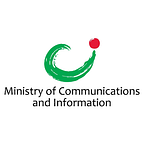#SMETowkay: Doing More with Less
When food and beverage group SimYee Holdings opened Atmosphere Bistro & Bar at East Coast Park back in 2014, Singapore’s labour crunch was already the order of the day. A 4,000 square feet restaurant like theirs would typically require 16 service staff to operate smoothly. However, knowing this number would be hard to gather, the group’s managing director, Chiam Wee Leong, purchased an iPad ordering system. This has allowed him to hire only 10 staff, yet provide better customer service and shorten the restaurant’s turnaround times.
The ordering system, from Aptsys Technology Solutions, was partially funded by iSPRINT, a grant to help SMEs like SimYee Holdings increase productivity through technologies. The group, which has since implemented the technology in all its four restaurants, bears the full costs of the annual maintenance fees. But the technology has more than paid for itself. In fact, the new system not only minimised labour costs at the new restaurants, Atmosphere and Soi Thai Soi Nice, it also increased sales by 20 per cent at the group’s older establishment, Shin-Sapporo Ramen.
The iPad ordering system works both as a menu and a waiter so that customers can send their orders directly to the kitchen. Since there’s no need for the staff to take down orders and to print out order tickets for the cooks, they can set up tables quickly for the next customers, thus improving the restaurant’s turnover rates. The self-ordering system also frees up the staff to interact with the customers. Wee Leong explains that as consumers tend to be creatures of habits, he is dependent on his staff to promote dishes, especially the new ones. Since he adopted the technology, he has seen his staff interacting more with customers.
Employees were initially skeptical of the technology as they felt that it took up more of their time when they had to teach the customers how to use it. But when the regulars soon got the hang of it, employees realised that it had made their job easier instead.
“Employees are reluctant to try new things, but they usually get used to it,” says Wee Leong.
With this solution, the company has also been able to boost its sales through its marketing strategies by taking advantage of the ‘flavour of the month’. In the past, an employee had to manually chart a sales report and took even longer to compare and analyse them. These are now done automatically, allowing Wee Leong and his team to respond quickly to the latest trends. Coupled with digital menus that are easy to update, the company can roll out promotions of any scale without incurring high printing costs.
Besides tracking sales, these reports have also helped the company reduce food wastage — since they reveal which dishes are less popular, the kitchen may order lesser produce for these items, instead of stocking them up to their last demanded quantities. This new practice is again good for business. “We serve our food fresh, which in turn improve our sales,” says Wee Leong.
But what pleases him most about using technology is that he can accomplish all the above, even with a lean team.
Next up, Wee Leong is considering helping his customers go lean too. By upgrading the software, he can access the feature of a customer loyalty programme. Customers can just key in their phone numbers to keep track of the benefits they are entitled to. “We are still using the chops today,” he says. “But I think people don’t want to carry so many loyalty cards with them.”
